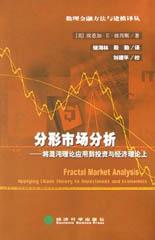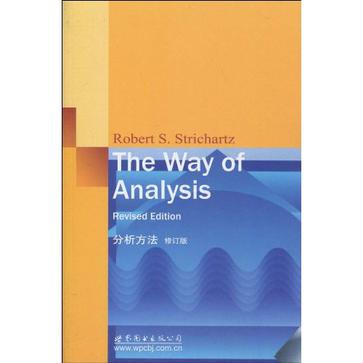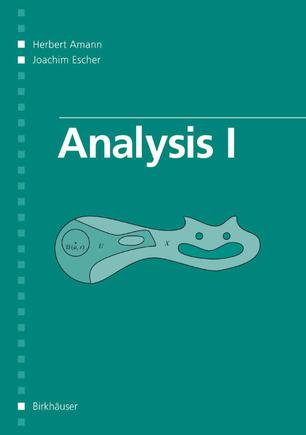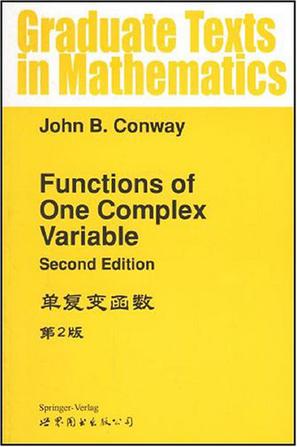-

日本蜡烛图技术新解
在1990年,史蒂夫·尼森将古老的日本蜡烛图技术系统地介绍给了西方投资界,这一举动震惊了传统的技术分析方法,史蒂夫·尼森因此被誉为现代蜡烛图技术之父。 今天,史蒂夫·尼森又为我们带来全新力作《日本蜡烛图技术新解》,在本书中,尼森又带来了以下内容: ·融入十几年交易实践,对蜡烛图技术的更深入理解。 ·第一次向读者介绍蜡烛图技术的四套独门绝技:卡吉图、连呼图、三线破顶图以及差异指标,这些技术在当今市场的实际应用中都有着卓越表现。 ·200份图表说明,几十个实操案例,并明确向读者介绍了这些技术方法的适用范围 ·讨论了各种技术在股票证券市场、商品期货市场、外汇市场和海外资本市场的不同作用 ·介绍了如何将这些方法与传统交易法则以及西方技术理念相融合,以取得更优市场水平。
-

分析的艺术
长期以来中国的信息科学与信息实践存在严重的脱节问题,虽然信息分析与情报研究广泛应用于各个领域的历史相当久远,但信息分析始终并未形成独立的学科体系,因此难以进一步的发展,并对中国未来的竞争实践构成了现实威胁。 为了使信息分析和情报研究能够有效地面向未来,作者结合日常分析工作,通过历时一年半的研究和写作,提出了信息反射论、思维训练、知识能力、信息链和策略研究等一连串的基础理论概念,引入了必要的方法体系和基本原则,批判性地挑战了长期以来信息科学的传统观点,并在此基础上,首次明确提出并构筑形成了信息分析学的基本概念和理论基础。 应该说,这是一部来自于专业研究人员的著作,是来自于现实的作品,非常务实且具有可操作性。 -

分形市场分析
-

分析方法
数学主要讲述思想的方法,深入理解数学比掌握一大堆的定理、定义、问题和技术显得更为重要。理论和定义共同作用,《分析方法(修订版)(英文版)》在介绍实分析的时候结合详尽、广泛的阐释,使得读者完全理解分析基础和方法。目次:基础;实数体系结构;实线拓扑;连续函数;微分学;积分学;序列和函数级数;超函数;欧拉空间和矩阵空间;欧拉空间上的微分计算;常微分方程;傅里叶级数;隐函数、曲线和曲面;勒贝格积分;多重积分。读者对象:数学专业的研究生以及相关的科研人员。 目录 Preface 1 Preliminaries 1.1 The Logic of Quantifiers 1.1.1 Rules of Quantifiers 1.1.2 Examples 1.1.3 Exercises 1.2 Infinite Sets 1.2.1 Countable Sets 1.2.2 Uncountable Sets 1.2.3 Exercises 1.3 Proofs 1.3.1 How to Discover Proofs 1.3.2 How to Understand Proofs 1.4 The Rational Number System 1.5 The Axiom of Choice 2 Construction of the Real Number System 2.1 Cauchy Sequences 2.1.1 Motivation 2.1.2 The Definition 2.1.3 Exercises 2.2 The Reals as an Ordered Field 2.2.1 Defining Arithmetic 2.2.2 The Field Axioms 2.2.3 Order 2.2.4 Exercises 2.3 Limits and Completeness 2.3.1 Proof of Completeness 2.3.2 Square Roots 2.3.3 Exercises 2.4 Other Versions and Visions 2.4.1 Infinite Decimal Expansion 2.4.2 Dedekind Cuts 2.4.3 Non-Standard Analysis 2.4.4 Constructive Analysis 2.4.5 Exercises 2.5 Summary 3 Topology of the Real Line 3.1 The Theory of Limits 3.1.1 Limits, Sups, and Infs 3.1.2 Limit Points 3.1.3 Exercises 3.2 Open Sets and Closed Sets 3.2.1 Open Sets 3.2.2 Closed Sets 3.2.3 Exercises 3.3 Compact Sets 3.3.1 Exercises 3.4 Summary 4 Continuous Functions 4.1 Concepts of Continuity 4.1.1 Definitions 4.1.2 Limits of Functions and Limits of Sequences 4.1.3 Inverse Images of Open Sets 4.1.4 Related Definitions 4.1.5 Exercises 4.2 Properties of Continuous Functions 4.2.1 Basic Properties 4.2.2 Continuous Functions on Compact Domains 4.2.3 Monotone Functions 4.2.4 Exercises 4.3 Summary 5 Differential Calculus 5.1 Concepts of the Derivative 5.1.1 Equivalent Definitions 5.1.2 Continuity and Continuous Differentiability 5.1.3 Exercises 5.2 Properties of the Derivative 5.2.1 Local Properties 5.2.2 Intermediate Value and Mean Value Theorems 5.2.3 Global Properties 5.2.4 Exercises 5.3 The Calculus of Derivatives 5.3.1 Product and Quotient Rules 5.3.2 The Chain Rule 5.3.3 Inverse Function Theorem 5.3,4 Exercises 5.4 Higher Derivatives and Taylor's Theorem 5.4.1 Interpretations of the Second Derivative 5.4.2 Taylor's Theorem 5.4.3 L'HSpital's Rule 5.4.4 Lagrange Remainder Formula 5.4.5 Orders of Zeros 5.4.6 Exercises 5.5 Summary 6 Integral Calculus 6.1 Integrals of Continuous Functions 6.1.1 Existence of the Integral 6.1.2 Fundamental Theorems of Calculus 6.1.3 Useful Integration Formulas 6.1.4 Numerical Integration 6.1.5 Exercises 6.2 The Riemann Integral 6.2.1 Definition of the Integral 6.2.2 Elementary Properties of the Integral 6.2.3 Functions with a Countable Number of Discon-tinuities 6.2.4 Exercises 6.3 Improper Integrals 6.3.1 Definitions and Examples 6.3.2 Exercises 6.4 Summary 7 Sequences and Series of Functions 7.1 Complex Numbers 7.1.1 Basic Properties of C 7.1.2 Complex-Valued Functions 7.1.3 Exercises 7.2 Numerical Series and Sequences 7.2.1 Convergence and Absolute Convergence 7.2.2 Rearrangements 7.2.3 Summation by Parts 7.2.4 Exercises 7.3 Uniform Convergence 7.3.1 Uniform Limits and Continuity 7.3.2 Integration and Differentiation of Limits 7.3.3 Unrestricted Convergence 7.3.4 Exercises 7.4 Power Series 7.4.1 The Radius of Convergence 7.4.2 Analytic Continuation 7.4.3 Analytic Functions on Complex Domains 7.4.4 Closure Properties of Analytic Functions 7.4.5 Exercises 7.5 Approximation by Polynomials 7.5.1 Lagrange Interpolation 7.5.2 Convolutions and Approximate Identities 7.5.3 The Weierstrass Approximation Theorem 7.5.4 Approximating Derivatives 7.5.5 Exercises 7.6 Eouicontinuity 7.6.1 The Definition of Equicontinuity 7.6.2 The Arzela-Ascoli Theorem 7.6.3 Exercises 7.7 Summary 8 Transcendental Functions 8.1 The Exponential and Logarithm 8.2 Trigonometric Functions 8.3 Summary 9 Euclidean Space and Metric Spaces 9.1 Structures on Euclidean Space 9.2 Topology of Metric Spaces 9.3 Continuous Functions on Metric Spaces 9.4 Summary 10 Differential Calculus in Euclidean Space 10.1 The Differential 10.2 Higher Derivatives 10.3 Summary 11 Ordinary Differential Equations 11.1 Existence and Uniqueness 11.2 Other Methods of Solution 11.3 Vector Fields and Flows 11.4 Summary 12 Fourier Series 12.1 Origins of Fourier Series 12.2 Convergence of Fourier Series 12.3 Summary 13 Implicit Functions, Curves, and Surfaces 13.1 The Implicit Function Theorem 13.2 Curves and Surfaces 13.3 Maxima and Minima on Surfaces 13.4 Arc Length 13.5 Summary 14 The Lebesgue Integral 14.1 The Concept of Measure 14.2 Proof of Existence of Measures 14.3 The Integral 14.4 The Lebesgue Spaces L1 and L2 14.5 Summary 15 Multiple Integrals 15.1 Interchange of Integrals 15.2 Change of Variable in Multiple Integrals 15.3 Summary Index -

Analysis I
-

单复变函数 第2版
This book is intended as a textbook for a first course in the theory offunctions of one complex variable for students who are mathematicallymature enough to understand and execute arguments. The actual pre-requisites for reading this book are quite minimal; not much more than astiff course in basic calculus and a few facts about partial derivatives. Thetopics from advanced calculus that are used (e.g., Leibniz's rule for differ-entiating under the integral sign) are proved in detail.